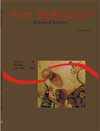Variabilidade isotópica (δ<sup>13</sup> C e δ<sup>15</sup>N) em produtores primários de ambientes terrestres e de água doce
Resumo
Em Ciências Ambientais o uso de δ13C e δ15N como traçadores biológicos é dependente do entendimento dos processos físicos, químicos e biológicos que determinam a proporção entre isótopos leves e pesados de uma amostra em estudo. A presente síntese procura discutir os fracionamentos isotópicos associados com as diferentes vias fotossintéticas, e relacionar as características intrínsecas dos ecossistemas terrestres e aquáticos que influenciam na amplitude das variações isotópicas dos produtores primários na natureza. A dinâmica dos efeitos isotópicos nos ambientes aquáticos é altamente complexa, resultando em uma variabilidade isotópica mais ampla do que aquela observada nos ambientes terrestres. Nesses ambientes, a integração de técnicas isotópicas permite melhor dimensionar as fontes autotróficas de energia que sustentam a base de teias alimentares e estabelecer as conexões entre os organismos produtores e consumidoresDownloads
DECLARAÇÃO DE ORIGINALIDADE E DIREITOS AUTORAIS
Declaro que o presente artigo é original, não tendo sido submetido à publicação em qualquer outro periódico nacional ou internacional, quer seja em parte ou em sua totalidade.
Os direitos autorais pertencem exclusivamente aos autores. Os direitos de licenciamento utilizados pelo periódico é a licença Creative Commons Attribution 4.0 (CC BY 4.0): são permitidos o compartilhamento (cópia e distribuição do material em qualqer meio ou formato) e adaptação (remix, transformação e criação de material a partir do conteúdo assim licenciado para quaisquer fins, inclusive comerciais.
Recomenda-se a leitura desse link para maiores informações sobre o tema: fornecimento de créditos e referências de forma correta, entre outros detalhes cruciais para uso adequado do material licenciado.












1.png)




3.png)













